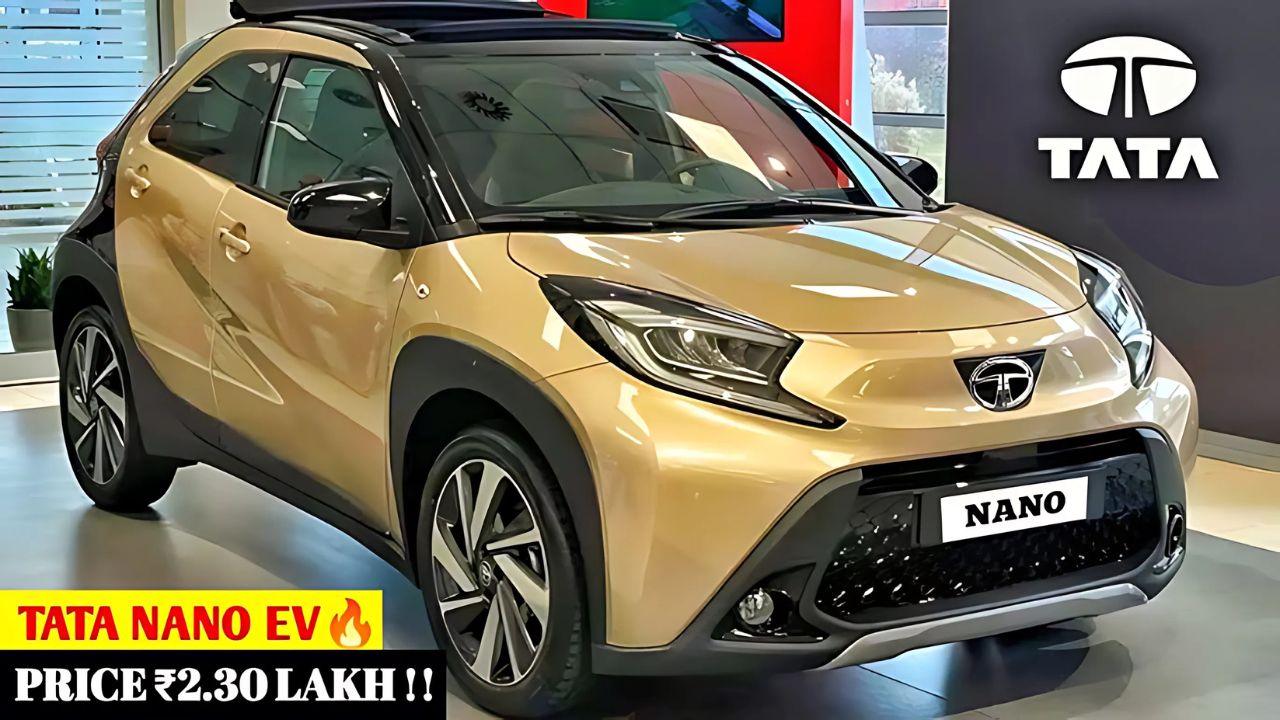Tata Nano: In the ever-evolving landscape of the automotive industry, few stories capture the imagination quite like that of the Tata Nano. Conceived as a revolutionary people’s car for India’s burgeoning middle class, the Nano’s journey from concept to reality and beyond offers a compelling narrative of ambition, innovation, and unforeseen challenges.
The Vision Behind the Wheel
The story of the Tata Nano begins with a vision – one that belonged to Ratan Tata, the visionary industrialist at the helm of the Tata Group. In the early 2000s, Tata was struck by a sight all too common on India’s bustling streets: families precariously perched on two-wheelers, navigating through traffic with children sandwiched between parents.
“What really motivated me, and sparked a desire to produce such a vehicle, was constantly seeing Indian families on scooters, maybe the child sandwiched between the mother and father, riding often on slippery roads,” Tata revealed in a poignant Instagram post in May 2022.
This observation sparked an ambitious goal: to create a safe, affordable four-wheeler that could replace the family scooter. The target price? An astonishing 1 lakh rupees (approximately $2,500 at the time), earning the yet-to-be-born vehicle the moniker “lakhtakia” car in local parlance.
From Drawing Board to Assembly Line
The journey from concept to reality was fraught with challenges. The Tata Nano was first unveiled to the world at the 2008 Auto Expo in New Delhi, creating a global buzz. Here was a car that promised to revolutionize mobility for millions, making the dream of car ownership accessible to a vast swathe of the population.
However, the road to production was far from smooth. Political controversies erupted over the location of the manufacturing plant, with protests led by then-opposition leader Mamata Banerjee forcing a relocation from Singur in West Bengal to Sanand in Gujarat in October 2008. Despite these setbacks, the Nano was finally launched with much fanfare by Ratan Tata in March 2009.
Initial Euphoria and Unforeseen Hurdles
The launch of the Nano was met with unprecedented enthusiasm. Bookings flooded in, and for a brief moment, it seemed that Tata’s vision of a people’s car was becoming a reality. The 625cc engine-powered vehicle, smaller than many entry-level cars like the Maruti 800, appeared poised to transform India’s automotive landscape.
Yet, as the initial excitement waned, challenges began to surface. Sporadic incidents of fires due to mechanical issues raised safety concerns. More critically, the very attribute that was meant to be the Nano’s strength – its affordability – began to work against it.
The Stigma of Being ‘Cheap’
In a twist of irony, the Nano’s positioning as the world’s cheapest car became its Achilles’ heel. What was intended as a badge of innovative frugal engineering instead became stigmatized as the “poor man’s car.” Many middle-class Indians, the very demographic the car was designed for, began to shy away from purchasing it, viewing ownership as a potential source of embarrassment rather than pride.
This unforeseen social dynamic dealt a severe blow to the Nano’s market prospects. Sales began to dwindle, and by June 2018, the writing was on the wall. Tata Motors produced just one unit that month, down from 275 in the same period the previous year.
Lessons Learned and Looking Ahead
In a 2013 television interview, as the Nano’s market presence was fading, Ratan Tata himself acknowledged the missteps in the car’s marketing strategy. The emphasis on the Nano’s low cost had backfired, overshadowing its innovative features and potential as a family vehicle.
Despite its commercial struggles, the Nano project continues to inspire respect within the automotive industry. It stands as a testament to ambitious thinking and the challenges of marrying affordability with aspirational value in emerging markets.
A Potential Electric Revival?
As of 2024, whispers of a potential revival for the Nano have begun to circulate. In an era increasingly focused on sustainable transportation, there’s speculation about the Nano making a comeback in an electric avatar.
Reports suggest that Tata Motors is considering bringing back the Nano with an electric drive mechanism. This reimagined version is expected to feature significant upgrades to the platform, exteriors, suspension, and tires, potentially addressing many of the original model’s limitations.
The move towards electrification aligns with global automotive trends and India’s push towards cleaner transportation solutions. If realized, an electric Nano could potentially fulfill its original promise of affordable, safe family transportation while also addressing environmental concerns.
The Nano’s Lasting Impact
While the Tata Nano may not have achieved its initial commercial goals, its impact on the automotive industry and Indian manufacturing cannot be understated. It pushed the boundaries of frugal engineering, challenged conventional thinking about car design and pricing, and sparked crucial conversations about mobility solutions for emerging markets.
The Nano story serves as a case study in innovation, market dynamics, and the complex interplay between product positioning and consumer psychology. As India’s automotive market continues to evolve, the lessons learned from the Nano experiment will undoubtedly influence future endeavors in affordable transportation.
Whether or not the Nano makes a successful comeback in an electric form, its legacy as a bold attempt to democratize four-wheel mobility will endure. In the annals of automotive history, the Tata Nano will always be remembered as the little car that dared to dream big, challenging industry norms and igniting imaginations worldwide.
As we look to the future of transportation in India and beyond, the spirit of innovation that drove the Nano project continues to inspire. In an age of rapid technological advancement and shifting consumer preferences, who knows what the next revolutionary “people’s car” might look like? One thing is certain: the dream of accessible, safe, and sustainable mobility for all remains as relevant as ever.
